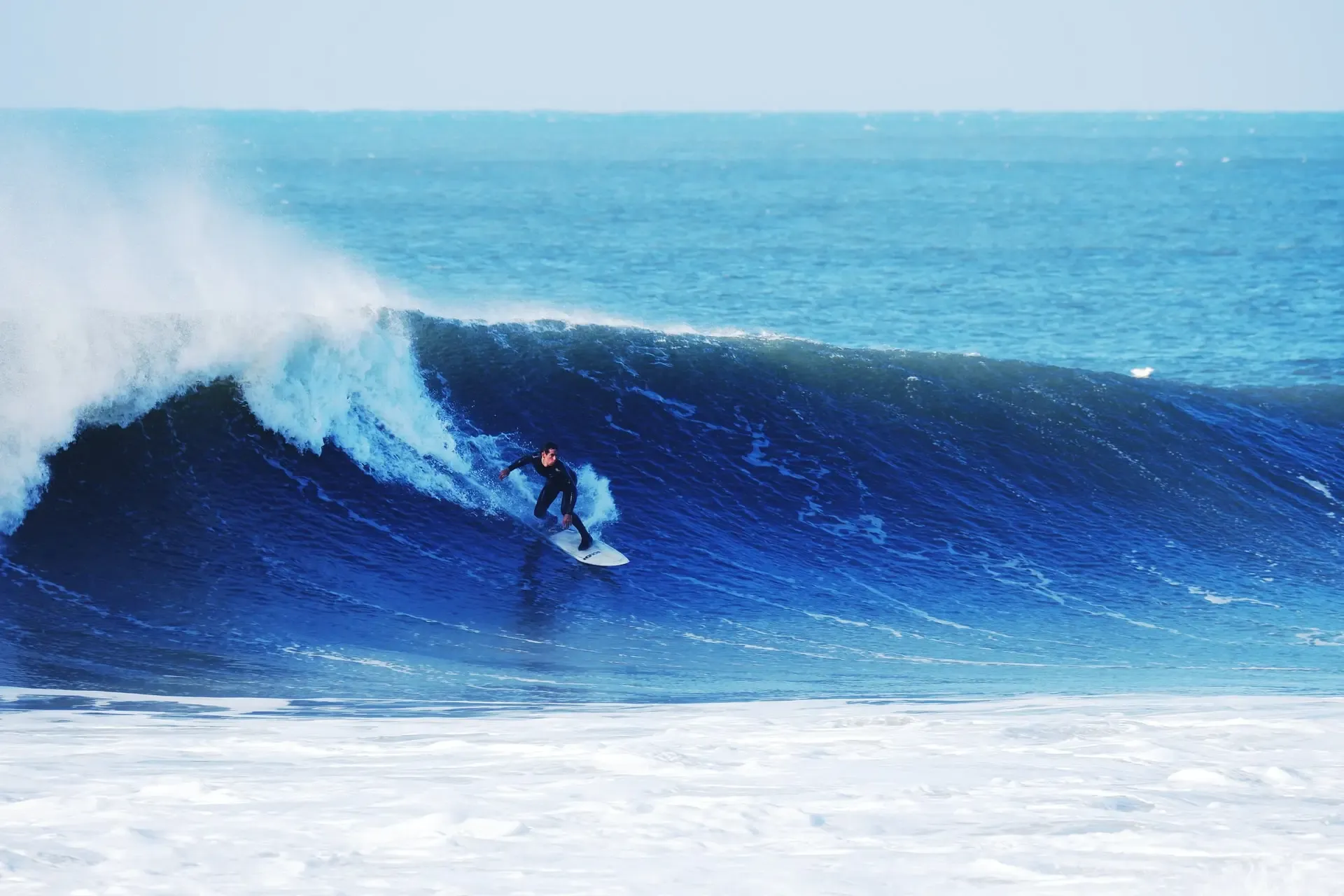The facts are not all the same. There are different types and, when choosing, it is easy to find that they are all compatible with surfing. However, there are differences that can make them quite uncomfortable for this particular sport.
The suits are made of neoprene. This material offers great advantages considering that it is very elastic, insulating and protects the skin from UV rays and injuries. In short: they are perfect for surfing.
First, it is important to explain that the facts are not all the same. With a quick search online, you can see that there are different types and it is easy to find that they are all compatible with surfing. It’s up to us to change our minds as there are differences that can make them quite uncomfortable for this particular sport.
Specifically, the other wetsuits generally don’t fit well and therefore don’t provide the surfer with the agility they need.
In addition, non-specialized wetsuits often offer very little shelter from the wind, in addition to having a lower degree of elasticity.
How to choose a wetsuit
The suits are made of neoprene. This material offers great advantages as it is very elastic, insulating and protects the skin from UV rays and injuries. In short: they’re perfect for surfing.
Firstly, it’s important to explain that not all wetsuits are the same. With a quick online search, you realise that there are different types and it’s easy to think that they’re all compatible with surfing. It’s up to us to change our minds, as there are differences that can make them quite uncomfortable for this particular sport.
Specifically, other wetsuits generally don’t fit well and therefore don’t provide surfers with the agility they need.
In addition, non-specialised wetsuits generally offer very little shelter from the wind, as well as having a lower degree of elasticity.
We recommend the complete guide to surfing in Portugal.

3 factors to choose the wetsuit
1. Suit materials and thickness
For starters, you need to know that all surfwear models are made using the properties of a material like neoprene. The thickness of the material is also very important. The most frequent solutions are those with measurements equal to 5/3 and 4/3, but there are also 3/2 neoprene suits and other measurements greater or smaller. But then…
WHAT DO THE NUMBERS ON THE NEOPRENE SUIT MEAN?
The first measurement number indicates the thickness of the neoprene panels on the torso, while the second refers to the thickness of the material on the arms.
To give a practical example, the 5/3 measurement corresponds to 5 mm thick for the torso and 3 mm thick for the arms.
There are clearly other aspects to consider. A greater thickness, such as size 5/3, is able to better maintain body temperature, thus retaining less heat loss. On the other hand, a thicker suit limits movement, so it may annoy some surfers.
Unfortunately, this rule does not always apply, as the quality of neoprene is not always the same. This means that cheaper, though thicker suits can still keep the body less warm than thinner but more expensive clothes.
Surf suits designed to withstand cold water temperatures and wind often have a few extra layers. These models are priced higher than clothing made from just neoprene, but they also come with a number of advantages. To take a concrete example, some of the high-end neoprene suits have an inner layer of fleece that works much better than an additional layer of neoprene. In short, fleece is able to keep temperatures better and doesn’t add much to the thickness of the suit, leaving it quite stretchy.
2. The use according to the season
The presence of a material such as neoprene is essential if you need a wetsuit that can retain body heat, but this need obviously depends on the climate and therefore the season. In fact, there are models designed specifically for each season.
SUMMER SURF SUITS
Summer suits are made with special materials that not only prevent excessive heat, but also manage to protect the skin from the sun’s ultraviolet radiation. However, they cannot be used in situations where the water temperature is below 23 degrees, precisely because they have a low ability to maintain body temperature.
Another model that can be used in hot climates is the shorty wetsuit, with short sleeves and pants, and generally lighter.
However, there are alternative solutions, such as neoprene tops, made specifically for the warm season. These have a very low material thickness, 1 millimeter, and are the best in terms of agility of movement.
SUITS FOR HALF SEASONS
For off-season, it’s best to choose a classic wetsuit in neoprene size 3/2, therefore 3 mm thick in the torso and 2 mm in the arms.
SURF SUITS FOR WINTER
In winter, it is advisable to look for the highest degree of protection possible, and consequently it is not advisable to choose a model smaller than size 4/3. However, we would like to remind you that the ability to retain heat depends not only on the size, but also on the quality of the suit and, consequently, on the price.
Finally, windy days require even more protection and in this case 5/3 suits are the best choice.

3. Types of zipper
Even the wetsuits have the classic zip, and even in this case not all zips are the same. Firstly, a distinction must be made between models with a long clasp and a short clasp.
Models with a long zip are easier to put on, as they open better and therefore allow for easier entry into the suit.
Neoprene wetsuits with shorter zips are more difficult to put on, but they have a very important advantage. As long clasps increase the risk of water penetration, these products minimize the risk of seepage.
As for the position of the zip, the back zip is the most traditional, but it is especially suitable for summer suits. The chest zip complicates things, especially when getting into the suit, but it maintains the body temperature better and is therefore very suitable for the cold seasons.
Finally, we have the fully zippered suits, which represent models designed for professional use. They are the most complicated to use, but also the most effective, as they eliminate the risk of water infiltration that occurs due to the locks.
If you’re still in doubt, we recommend renting a wetsuit to try on.

Accessories
In some situations, when you are going to surf, you may need extra protection. Boots, hoods and gloves complete your suit to keep your extremities warm.
Boots
To surf in reef areas, the ideal is to use special boots. The sturdy rubber outsole protects your feet from cuts that can be caused by reefs, sea urchins and other hazards. Thin neoprene and mesh ensure you don’t overheat.
Thicker neoprene boots (3 – 5 mm) are ideal for surfing in cold water. As the feet are the part of the body that comes most in contact with water, they can cool down quickly. The boots also help with grip due to their non-slip soles.
Gloves and Hoods
Gloves are another useful addition to your winter prep. They can be available with 3-finger models or 5-finger models. Gloves are certainly the hottest, but they limit finer motor skills.
Hoods provide protection from cold wind and water. Depending on the outside temperature and the water temperature, there are different models of extractor hoods available.

More eco-sustainable alternatives to neoprene
One disadvantage of neoprene is that synthetic rubber manufacturing processes are harmful to the environment. Fortunately, some brands have developed greener alternatives. With innovative and sustainable technologies, these manufacturers have brought a breath of fresh air to the surfing industry.
Patagonia Yulex wetsuits
Patagonia worked with Yulex™ to develop a renewable alternative to plant-based neoprene. These neoprene wetsuits are made with 85% natural rubber, derived from sources certified by the Forest Stewardship Council® of the Rainforest Alliance, and 15% chlorine-free synthetic rubber, to reduce dependence on petrochemicals.
Related article: Common mistakes when buying your first surfboard

